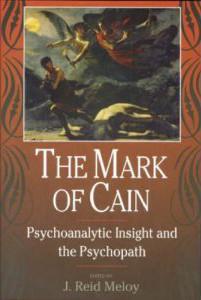
The Mark of Cain makes available for the first time the accumulated psychoanalytic understanding of the psychopathic mind. Editor Reid Meloy, a leading authority on the psychology of the psychopath, has brought together in a single collection the most historically important psychoanalytic papers on the psychopath – papers by Helene Deutsch, Wilhelm Reich, John Bowlby, Phyllis Greenacre, August Aichhorn, Adelaide Johnson, Donald Winnicott, Betty Joseph, Neville Symington, Ben Bursten, and Otto Kernberg, among others – and delineated their continuing relevance to contemporary understanding. According to Meloy, two theoretical traditions flow into the psychoanalytic understanding of psychopathy. The first tributary focuses on the early development of the psychopath in order to illuminate how a profound alteration in self-regard leads both to a denigration of the other and to an impulsive search for gratification in the present. The second tributary seeks to locate the psychopathic miscarriage of human potentiality within analytic theories of personality structure and clinically grounded differential diagnosis.
The Mark of Cain presents the major contributions associated with both of these traditions. Included within this body of literature are the original formulations of concepts that have long since become part of the psychoanalytic nomenclature: the “affectionless” juvenile offender, the diagnostic significance of “affect hunger,” the behavioral consequences of “superego lacunae,” the recourse to promiscuous identification in “the impostor,” and the paradoxically lethal lure of “malignant narcissism.” . Of special note are Meloy’s historical notes to each chapter and two section introductions, the latter major essays in their own right. In the spirit of integration that typifies his approach to psychopathy, Meloy shows how a profoundly disordered attachment history and the early appearance of a severe conduct disorder, two psychodiagnostic indicators of psychopathy, can be reconfigured in the context of current biological and sociological research. Equally conversant with the treatment issues specific to this difficult patient population, he illuminates how the distinctive countertransference responses elicited by the psychopath may assist the clinician in avoiding victimization. . The explosion of empirical research on psychopathy over the past two decades masks the fact that much contemporary work in this area is grounded in the clinical formulations of leading psychoanalysts of the twentieth century.
The Mark of Cain rescues this intimate understanding of the inner world of the psychopath and thereby contributes to clinical realism in the face of deception, manipulation, exploitation, and even frank dangerousness. “Reid Meloy, America’s foremost authority on the psychopathic mind, has brought together in one volume the accumulated wisdom that follows from the psychoanalytic investigation of psychopathy. Most impressively, he has contextualized these classic contributions with brilliant commentary that weaves diverse perspectives into an integrated clinical tapestry that will be of great value to both beginning and experienced clinicians.” Glen O. Gabbard, M.D.
Cite
Meloy, J. R. (2001). The Mark of Cain. Taylor & Francis, Inc.
Purchase a Copy
